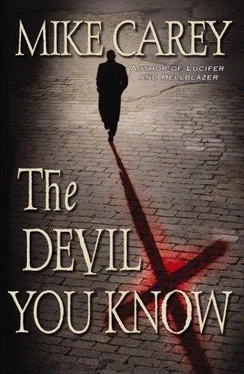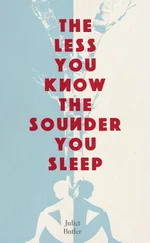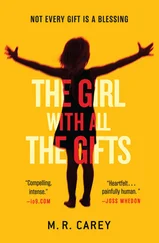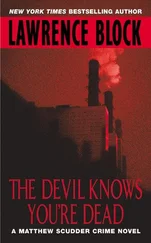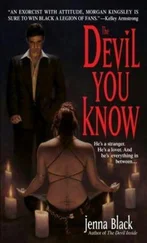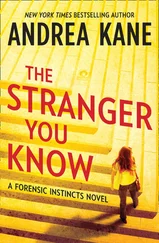“Got you, you bastard,” I muttered. “Nicky, that’s brilliant—thanks. I’ll be wrapping this up in the next day or so, and then you can expect Christmas to come early.”
Nicky took the praise as stoically as he’d taken the curses earlier; it would have been beneath his dignity to take a bow. But he didn’t move. “There’s one other thing, Felix,” he said.
“Go on.”
“While I was in there anyway, I took a look around some of the other folders. There were a couple of dozen of them, going back about six or seven years. The older ones are fine—no tampering, no anomalous entries. But for three years or so now, user 020 has been keeping really busy. The earliest Bluetooth-fed entry was last March. Before that, he was using an IRF widget, but the principle was the same—using the back door that the system keeps open so that you can dock your laptop or your Palm Pilot with your main machine and update address books and the like.”
He stood up.
“About two thousand records were affected,” he said. “On this drive, anyway. Assuming there are other self-contained input machines, there’s no saying what else Mr. Twenty has been getting up to.”
As he walked to the door, I called out after him, “Nicky, what’s he doing to the records? Just so I’m absolutely clear. What’s he falsifying?”
“You already know that, Felix,” Nicky chided me.
“He’s deleting them,” I said. “He’s wiping items off the system.”
“Exactly. Hey, I was never here, which is why you didn’t see me. Have a nice evening.”
SUNDAY. THE DAY OF REST. BUT AS SOME CLEVER bastard once wittily remarked, there’s no rest for the wicked—which must make me a very nasty piece of work indeed.
I don’t know where policemen go to unwind and spend their precious limited leisure time. You can sort of picture it, though. Some bar where everyone checks the pint line on their glass before they take a sip, where you can leave your coat on the back of the chair when you go to take a piss, and where Paki jokes never go out of fashion.
For obvious reasons, that wasn’t where James Dodson arranged to meet me. He chose Bar Italia on Old Compton Street instead, and he was sitting at the far end when I arrived, trying hard to blend in with the decor. As soon as I sat down, cinnamon latte in hand, he slapped a manila folder down on the bar top and stood up.
“Everything you need is in there,” he said. “Now, unless drinking with you is a deal-breaker, I’m leaving. And I’m keeping you to your word, Castor. If I ever hear from you again—if I ever even see your face—I’ve got some friends who’ll be only too happy to make you cry tears of blood.”
I shot him a pained glance, the cliché offending me more than the threat. “Yeah, but then I’d just die, Dodson, and I’d have to come back and haunt you. Better quit while you’re behind.”
He stalked out, either deciding that I wasn’t worth the effort of verbal swordplay or remembering that he’d come out unarmed. I turned my attention to the folder.
Like the man said, it had everything I needed. The cinnamon latte went cold and formed an unhealthy-looking skin like a badly healed wound while I dived deep into the phantasmagoria of signed and sealed plodology that Dodson had dredged up for me.
You can say what you like about our police force, but their paperwork is immaculate. Autopsy reports were cross-referenced to X-ray prints, path results, explanatory diagrams, and in one case even a T-shirt—or at least a photograph of a T-shirt. That was included because some fibers from the shirt were found down the throat of the woman in question, indicating some attempt to asphyxiate her “after her clothing had been removed at an earlier stage in the assault.”
Being what I am makes me morbidly sensitive in a lot of ways, obnoxiously hard-assed in others. On this occasion, it was the first trait that was dominant, and I had to work to keep my breathing regular as I pieced together the nightmare circumstances in which these three women’s lives had hit the buffers.
Jenny Southey was a hit-and-run victim, but it hadn’t been clean or quick. She was a prostitute working the streets around King’s Cross. Barely eighteen. A car had crushed her against a wall, breaking her pelvis and rupturing her liver. The accompanying file notes said they’d brought in a suspect, and he’d made an incoherent confession. The whole thing seemed to be an accidental result of overenthusiastic curb-crawling with a vast amount of alcohol thrown in. Whatever sentence they eventually gave the guy, I wished him a lifetime’s supply of brewer’s droop to go along with it.
Caroline Beck was even younger, but her death was just as brutal and arbitrary. She died of a methadone overdose at a party, three streets away from the Bonnington in the evocatively named Polygon Road. That would have been par for the course if she’d been a user, but she wasn’t; some high-as-a-kite arsehole had come up to her while she was dancing and injected her before she even knew what was going on. He’d just wanted to spread the good vibes, but since he chose the carotid artery and since she’d never injected before, the effect was spectacularly enhanced. The girl had died about half an hour later, when her muscles went into spasm, and her breathing stopped.
Both of those sounded plausible enough to me—the sort of fucked-up, messy deaths that leave a little piece of your spirit trapped in the mesh of agonizing, unresolved emotions. But when I turned to number three, I knew I’d found my ghost.
Unlike the other two, she didn’t have a name—just a case number and a clinical description. One hundred and fifty-nine centimeters in height; hair brunette; eyes brown; build slender; age approximately mid-twenties. Naked, but a T-shirt found near the body provided samples of her blood and sloughed skin cells when tested. She’d been found in a skip on a builder’s yard in the hinterland beyond the Ampthill Estate, dead for at least three days. The date on the incident report was Wednesday, September 14—the day after the ghost was first sighted at the Bonnington Archive.
The details were grim. The girl had been sexually assaulted, both vaginally and anally, with traces of semen only in the vagina but trauma to both areas consistent with rape. Her face had been extensively slashed with some sharp and irregular metal implement that had caused massive laceration and blood loss. The police pathologist had spent a lot of time cataloging those facial injuries: “a multitude of shallow, irregular cuts and gouges, widely varied in depth and profile,” he noted, deadpan, before going on to list the position and extent of each and every one of them. “The instrument used in the attack had a number of different surfaces and edges that moved independently of each other,” he concluded. But the cause of death was asphyxiation—that T-shirt, jammed tight down into her throat until she couldn’t breathe around it.
The facial injuries were a dead giveaway. So was the T-shirt. In the photo you could clearly read the motif. I had no idea what it meant, but even I could tell that it was Cyrillic. And it wasn’t a T-shirt, as such; it was a white, sleeveless hoodie.
In among the rest of the documentation, I found a photograph of the girl’s head and shoulders. The dry description of those wounds did nothing to convey the reality, and I flinched as I stared at the bloodied scrape of raw flesh that was all that was left of her upper face. I knew the first time I saw her that it wasn’t a veil she was wearing; I just hadn’t wanted to think too much about what it really was.
So it’s you, I thought. Somebody raped you. Somebody murdered you. Somebody tied your soul up in a magical straitjacket.
Читать дальше
